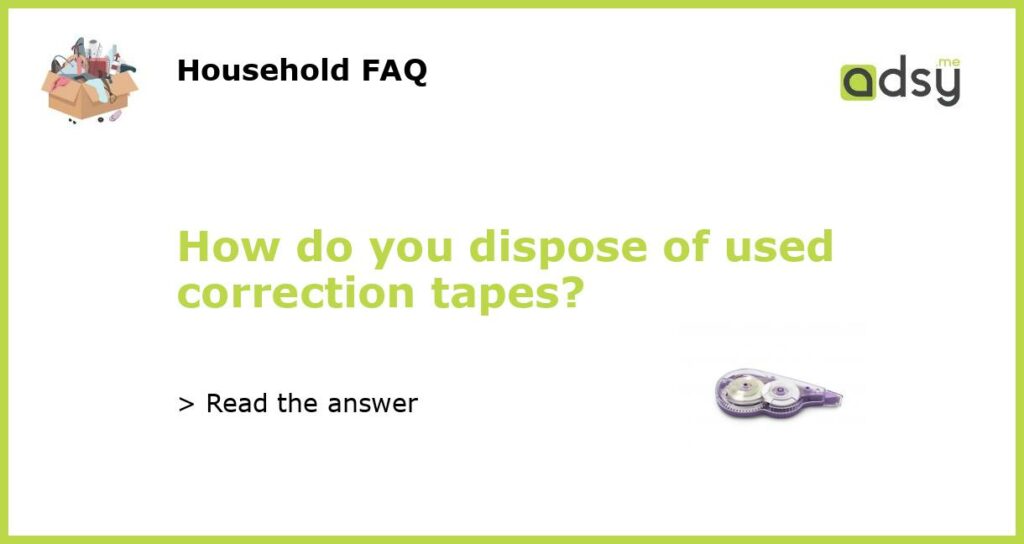The Problem of Used Correction Tapes
If you use correction tapes to cover up mistakes in your writing or artwork, you may be wondering how to dispose of them properly. After all, they contain non-biodegradable materials such as plastic and adhesive, which can harm the environment if not discarded in the right way. Moreover, some correction tapes may also contain toxic chemicals that can seep into the soil or water if left to decompose in a landfill. Therefore, it is important to learn about the best practices for disposing of used correction tapes, both for your own safety and the planet’s health.
Option 1: Recycle Them
If you want to minimize your carbon footprint and reduce waste, you can try to recycle your used correction tapes. However, not all recycling centers accept correction tapes, as they are not considered standard plastic items. To find a recycling center that accepts correction tapes, you can check with your local waste management division or search online for recycling programs near you. In some cases, you may need to mail your correction tapes to a specialty recycling company, which can be inconvenient and costly.
Option 2: Compost Them
If you prefer a more natural approach to disposal, you can compost your used correction tapes. This method works best if your correction tapes are made of paper or other organic materials, as some plastic-based tapes may not decompose as readily. To compost your correction tapes, simply tear them into small pieces and mix them with other organic waste, such as food scraps, yard trimmings, and dry leaves. Composting can take several months to yield fully decomposed soil, so make sure to use a well-ventilated compost bin and turn the compost regularly to promote aeration.
Option 3: Use Them for Crafts
If you are a DIY enthusiast, you can repurpose your used correction tapes for various craft projects. For example, you can use the plastic cases of correction tapes as holders for small items like paper clips, buttons, or beads. You can also cut the adhesive strips into shapes and use them as stickers for greeting cards or gift wraps. Furthermore, you can paint over the tapes to create textured backgrounds for paintings or mixed media artworks. By giving your used correction tapes a second life, you can unleash your creativity while also reducing waste.
Option 4: Dispose of Them in the Trash
If you cannot find a way to recycle or compost your used correction tapes, you may have to dispose of them in the regular trash. However, before throwing them away, make sure to wrap them in a plastic bag or tape them together to prevent them from scattering or sticking to other items. Also, check with your local waste management guidelines to see if there are any restrictions or precautions regarding the disposal of correction tapes. While this option is not ideal for the environment, it may be the only practical choice if you cannot access recycling or composting options.
Be Mindful of Your Waste Footprint
No matter which option you choose, it is important to be mindful of your waste footprint and the impact it has on the planet. By using less correction tape or opting for eco-friendly alternatives such as erasable pens or pencils, you can reduce the amount of waste you generate in the first place. Additionally, by educating yourself and others about the best ways to dispose of used correction tapes, you can contribute to a more sustainable future for all.






